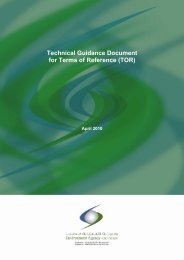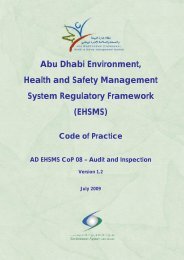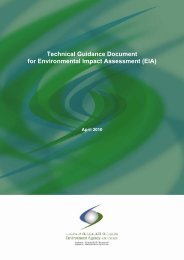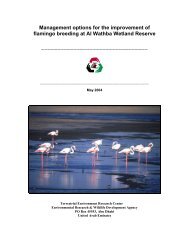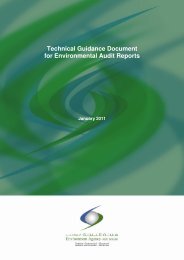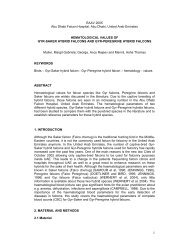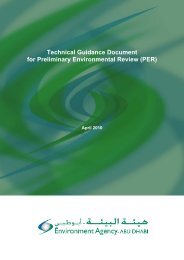Standard Operating Procedure (SOP) for Compliance Monitoring ...
Standard Operating Procedure (SOP) for Compliance Monitoring ...
Standard Operating Procedure (SOP) for Compliance Monitoring ...
You also want an ePaper? Increase the reach of your titles
YUMPU automatically turns print PDFs into web optimized ePapers that Google loves.
<strong>SOP</strong> <strong>for</strong> <strong>Compliance</strong> <strong>Monitoring</strong> Using CEMSs<br />
−<br />
−<br />
−<br />
Start and end times when the CEMS was inoperative<br />
Nature of system repairs of adjustments<br />
Documentation of any time the monitor exceeded the instrument range (include the date,<br />
duration, nature or cause, and corrective action)<br />
• A summary of the EER, conveying in<strong>for</strong>mation on excess emissions and CEMS availability.<br />
The important numbers are the excess emissions (percentage of excess emissions) and<br />
monitor availability (percentage of process operating time that the monitor is operating and<br />
available to provide valid data). Annex 5 provides an example on how to present data <strong>for</strong> the<br />
EER and CEMS per<strong>for</strong>mance summary.<br />
2. How to Evaluate <strong>Monitoring</strong> Reports<br />
When reviewing monitoring reports, certain criteria should be evaluated to ensure compliance with<br />
applicable regulations and EAD requirements. In particular, the Owner or Operator should thoroughly<br />
evaluate the following:<br />
• Excess emissions (i.e., the number and percentage of measurements that exceed standards)<br />
• Values close to emission limits<br />
• Total air pollutant emissions (i.e., emissions inventory)<br />
• CEMS availability<br />
• QA/QC results.<br />
Focusing the analysis on these criteria will help EAD evaluate facility compliance and overall CEMS<br />
per<strong>for</strong>mance.<br />
3. <strong>Standard</strong>s Used to Compare Results<br />
It is important <strong>for</strong> the source Owner or Operator to know which regulation(s) cover the installation,<br />
certification, operation, QA, and data reporting <strong>for</strong> each CEMS. Although some activities such as<br />
sampling location, installation, and certification are usually consistent from one permit to another,<br />
activities such as QA (i.e., frequency of audits and audit pass or fail limits) or reporting requirements<br />
may be very different depending on the regulation, permit condition, or other requirements.<br />
Accordingly, the Owner or Operator should identify standards applicable to its facility, source, or<br />
process and compare the emissions data generated by the CEMS against appropriate standards.<br />
Allowable emissions limits <strong>for</strong> criteria pollutants and other hazardous pollutants from stationary<br />
sources in Abu Dhabi Emirate were established by Ministerial Cabinet Decree No. 12 in 2006.<br />
Hydrocarbon fuel combustion sources (e.g., electrical generating units) are significant sources of<br />
pollution monitored by CEMS in Abu Dhabi; EAD has established air pollution emissions standards<br />
<strong>for</strong> hydrocarbon fuel combustion sources. These standards are the same as those outlined in the<br />
United Arab Emirates federal regulations and are listed in Table 4.<br />
Table 4. Maximum Allowable Emissions Limits of Air Pollutants Emitted<br />
from Hydrocarbon Fuel Combustion Sources<br />
Substance Symbol Sources<br />
Nitrogen oxides (expressed<br />
as nitrogen dioxide [NO 2 ])<br />
NO x<br />
Fuel combustion units:<br />
• Gas fuel<br />
• Liquid fuel<br />
Turbine units:<br />
• Gas fuel<br />
Maximum Allowable Emissions Limits<br />
(mg/Nm 3 )<br />
• Liquid fuel<br />
Sulphur dioxide SO 2 All sources 500<br />
Carbon monoxide CO All sources 500<br />
Total suspended particles TSP All sources 250<br />
Note: mg/Nm 3 = milligrammes per normal cubic metre.<br />
350<br />
500<br />
70<br />
150<br />
7





